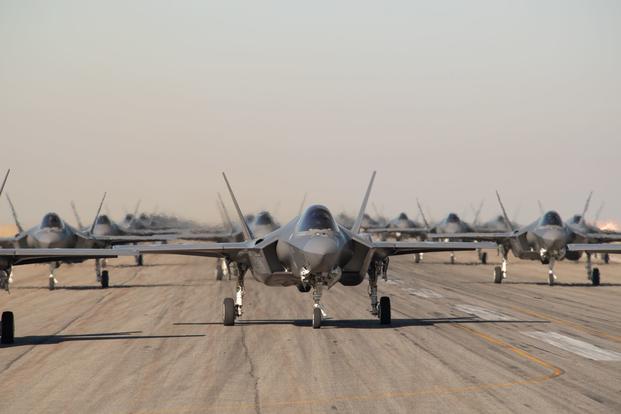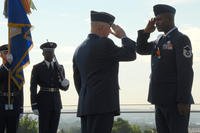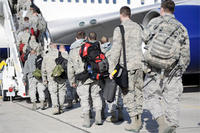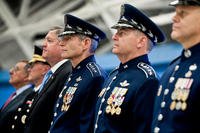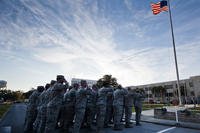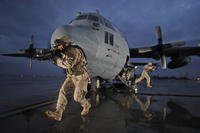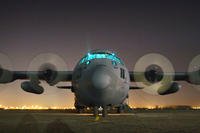1947 -- The U.S. Air Force Gains its Independence
World War II had been over for two years and the Korean War lay three years ahead when the Air Force ended a 40-year association with the U.S. Army to become a separate service. The U.S. Air Force thus entered a new era in which airpower became firmly established as a major element of the nation's defense and one of its chief hopes for deterring war. The Department of the Air Force was created when President Harry S Truman signed the National Security Act of 1947.
Lawmakers explained why they felt the U.S. needed to evolve the Army Air Corps into an independent branch in a Declaration of Policy at the beginning of the National Security Act of 1947: To provide a comprehensive program for the future security of the United States; to provide three military departments: the Army, the Navy, and the Air Force; to provide for their coordination and unified direction under civilian control and to provide for the effective strategic direction and operation of the armed forces under unified control.
The 1947 law created the civilian positions of Secretary of Defense and Secretary of the Air Force, to be filled by presidential appointment. The functions assigned to the Commanding General, Army Air Forces, were to be transferred to the Department of the Air Force. The act provided for the orderly transfer of these functions as well as the property, personnel, and records over a two-year period.
General Carl A. Spaatz became the first Chief of Staff of the Air Force on 26 September 1947. When General Spaatz assumed his new position, the first Secretary of the Air Force, W. Stuart Symington, was already on the job, having been sworn in on 18 September 1947. He had been Assistant Secretary of War for Air and had already worked closely with General Spaatz. The new Air Force was fortunate to have these two men as its first leaders. They regarded air power as an instrument of national policy and of great importance to national defense. Both men also knew how to promote air power and win public support for the Air Force.
Source: Air Force Historical Studies Office, Joint Base Anacostia Bolling, DC.
Stay on Top of Your Military Benefits
Military benefits are always changing. Keep up with everything from pay to health care by signing up for a free Military.com membership, which will send all the latest benefits straight to your inbox while giving you access to up-to-date pay charts and more.

